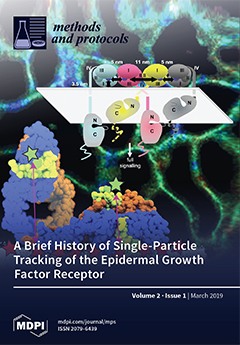Metagenomic techniques, notably the cloning of environmental DNA (eDNA) into surrogate hosts, have given access to the genome of uncultured bacteria. However, the determination of gene functions based on DNA sequences alone remains a significant challenge. The functional screening of metagenomic libraries represents
[...] Read more.
Metagenomic techniques, notably the cloning of environmental DNA (eDNA) into surrogate hosts, have given access to the genome of uncultured bacteria. However, the determination of gene functions based on DNA sequences alone remains a significant challenge. The functional screening of metagenomic libraries represents an interesting approach in the discovery of microbial metabolites. We describe here an optimized screening approach that facilitates the identification of new antimicrobials among large metagenomic libraries. Notably, we report a detailed genomic library construction protocol using
Escherichia coli DH10B as a surrogate host, and demonstrate how vector/genomic DNA dephosphorylation, ligase inactivation, dialysis of the ligation product and vector/genomic DNA ratio greatly influence clone recovery. Furthermore, we describe the use of an airbrush device to screen
E. coli metagenomic libraries for their antibacterial activity against
Staphylococcus aureus, a method we called bacteriospray. This bacterial spraying tool greatly facilitates and improves the functional screening of large genomic libraries, as it conveniently allows the production of a thinner and more uniform layer of target bacteria compared to the commonly used overlay method, resulting in the screening of 5–10 times more clones per agar plate. Using the
Burkholderia thailandensis E264 genomic DNA as a proof of concept, four clones out of 70,000 inhibited the growth of
S. aureus and were found to each contain a DNA insert. Analysis of these chromosomic fragments revealed genomic regions never previously reported to be responsible for the production of antimicrobials, nor predicted by bioinformatics tools.
Full article






